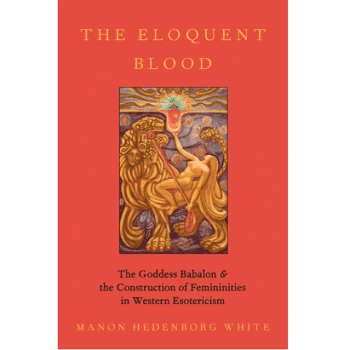Hello, beautiful creatures.
As readers who’ve been around for more than a minute or two can attest, this blog is less an instructional column on magic or devotional practice than an series of analytical considerations of the culture (or cultures) which arise from the practice of Paganism, polytheism, and magical spirituality. It’s why, for instance, I’ve posted very little in the way of rituals or spellwork, despite those making up a substantial part of my personal practice as a witch. Similarly, while my book Outside the Charmed Circle does includes rituals, spells, and exercises, the bulk of the book’s runtime is devoted to analysis, hypothesis, theory, and personal anecdotes… which, in my defense, are intended to be relevant to the topic, or at least entertaining.
In other words, I’m less interested in writing about how we do things than about why we do what we do, and what that says about us. I make no apologies for this; the field of Pagan, polytheist, and magical literature is certainly broad enough to accomodate both instructional texts and more theoretical material. In fact, one of the consistent complaints I’ve heard and read about “Pagan books” over the years is the lack of such material. Again and again, I’ve come across the laments of people looking for something “more advanced” than the usual “Wicca 101” books1 on the market. Sadly, one of the similarly consistent criticisms of books with a more theoretical bent is their lack of pre-prepared rituals, spells, and exercises making them inaccessible to beginners. It’s something of a paradox: how can you provide advanced material in a way that doesn’t put off newbies, who are often the most avid readers (and buyers) of books on Paganism?
Fortunately for both beginners and advanced practitioners interested in Wicca and Wiccan-style witchcraft, Yvonne Aburrow has found a way to square that particular circle.
In 2018, Aburrow released Dark Mirror: The Inner Work of Witchcraft and The Night Journey: Witchcraft as Transformation. Between them, these two books comprise something quite special: two of the best simultaneously introductory and advanced works on Wiccan witchcraft to be found. With the imminent release of the second and revised editions of both Dark Mirror and The Night Journey, courtesy of the Centre for Pagan Studies and the Doreen Valiente Foundation, it seems a reasonable time to say a few words about why I say that and why, if your interests lie within a standard deviation of Wicca, you owe it to yourself to pick up Aburrow’s treatises.

The second half of the book, however, is where Aburrow dives into the real meat of the “inner work,” and where the book truly shines. They offer intriguing and, at times, challenging perspectives on the practices and traditions of Wicca, along with a host of exercises, rituals, meditations, discussion prompts, and suggestions for further exploration and inquiry, all intended to guide the interested reader into a deeper understanding of the mysteries at the heart of Wiccan practice. This material doesn’t come across as prescriptive, but rather as guidelines offered to the reader for engaging with Wiccan witchcraft in a fashion which is both inclusive and profound.
Following on from the previous book, The Night Journey utilizes the historical legend of the witch’s flight to the sabbat to expand Aburrow’s notion of a modern witchcraft which is “queer, transgressive, and resistant to authoritarian versions of reality.” They devote the first half of the text to picking up the threads of inner work first addressed in Dark Mirror and pursuing them through various issues of interest: social justice, queerness, ecology, witchcraft as social and political resistance, ancestor work, mental illness, and more. As before, these discussions are accompanied by exercises, personal work, and prompts for further exploration. This description might sound a bit scattershot, but Aburrow gathers all the threads together in the book’s second half, where they apply the insights and tools from the opening chapters to the practical work of the witch in the world: from running a coven to challenging authority, from navigating interpersonal relationships to reconciling with one’s own demons and fears. In the spiritual world of The Night Journey, witchcraft isn’t seen as some sort of rarefied practice isolated from the messy mundane world, but as a beautiful, viable, and practical way of living in the world as a person of power and integrity.
Taken together with Dark Mirror, these two texts comprise something quite special: a revolutionary vision of traditional Wicca which looks to the Craft’s future while simultaneously honoring its traditions. I found both books enthralling, enriching, and inspiring, especially read in conjunction with one another, and I’m desperately glad I didn’t read them before I wrote Outside the Charmed Circle. While our books aren’t identical by any means, they do cover some of the same topics, and from a similar enough viewpoint that, had I read Aburrow first, I might not have written my book. On the plus side, I now have my answer for all the witchy-minded readers who’ve asked what they should read after they’ve finished my book.
And now, so do you.
Yvonne Aburrow’s Dark Mirror: The Inner Work of Witchcraft is available for pre-order now. The Night Journey: Witchcraft as Transformation will be forthcoming soon.
[NB: I received electronic copies of both of these books from the author for review purposes. I have not received any remuneration for this review.]
Until next time, dear ones, be safe, and be kind to one another. ♥
- Of course, those “101” books consistently outsell everything else on the market… but, to steal a line from Alton Brown, that’s another blog post.
- As the “Godmother of Wicca,” Valiente’s influence on Aburrow is apparent throughout the book, from the tone of the text to Aburrow’s grounding in Gardnerian Wicca to, of all things, the magic mirror from Valiente’s collection featured on the book’s cover.

















